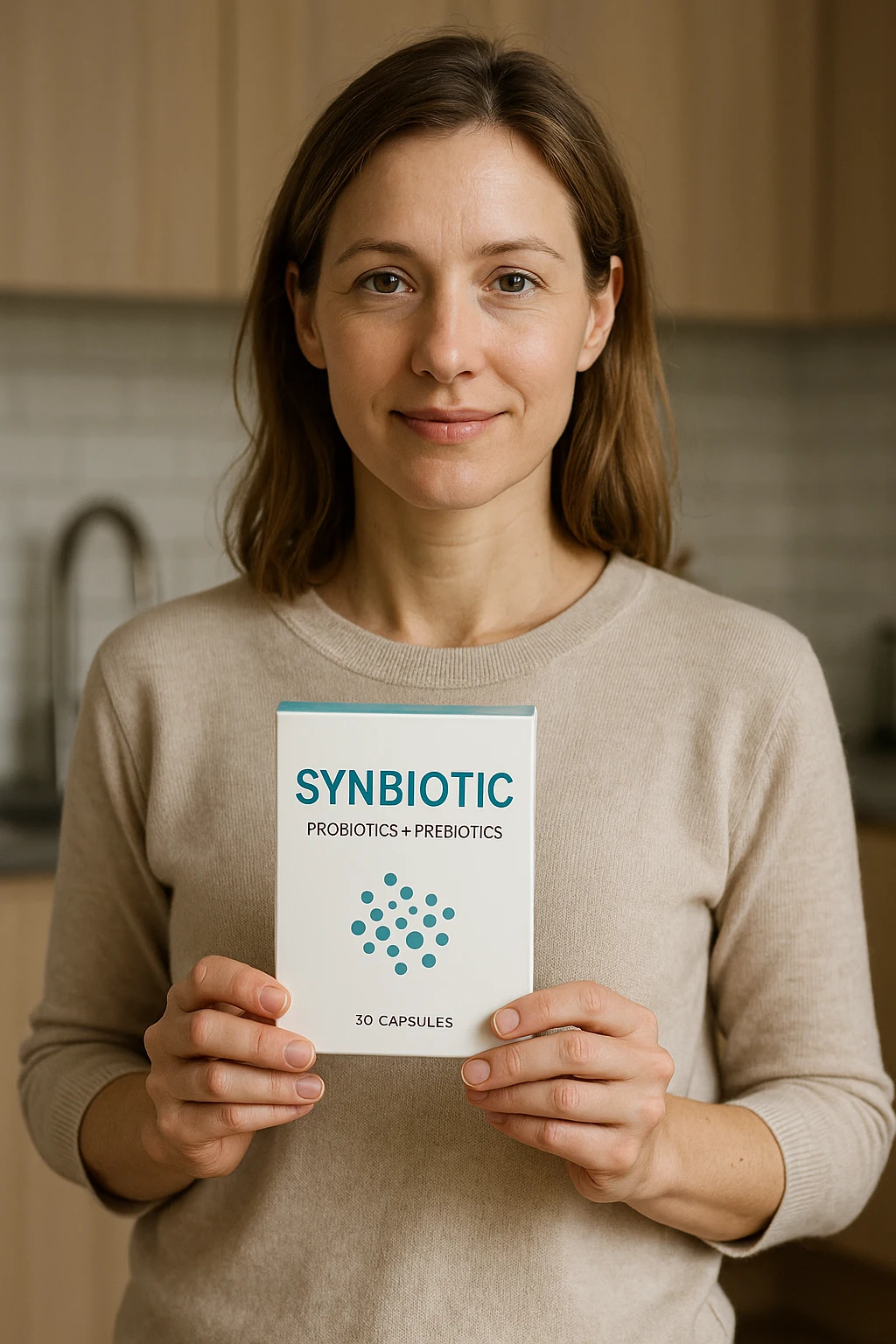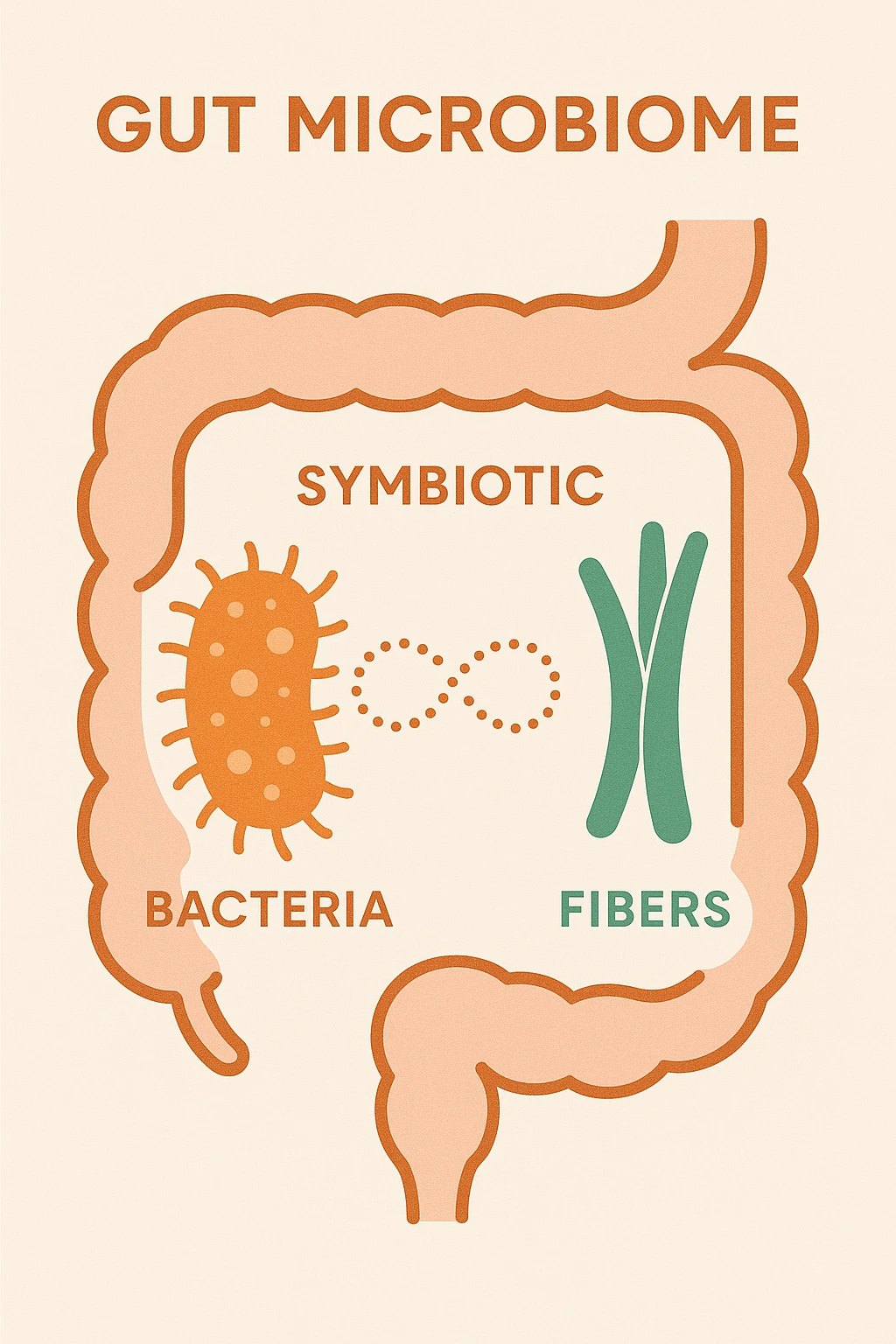

Introduction: why we are talking about symbiotics right now?
In 2025, the concept of ‘symbiotic’ has moved beyond the traditional combination of probiotics and prebiotics.
At Vitafoods Europe 2025, the international trade fair Vitafoods Europe 2025 showcased dozens of innovative solutions that combine specific strains of bacteria with carefully selected fibers, polyphenols or post-biotics – creating synergistic effects to support the gastrointestinal tract, immune system and even cognitive health.
These “smart pairings” are ushering in a new era of functional nutrition.

What are next-generation symbiotics?
A classic symbiotic is a mixture of live microorganisms (probiotics) and a substrate (prebiotics) that stimulates their growth.
Newer generation symbiotics are targeted combinations of bacteria and nutrients that demonstrate evidence-based efficacy in specific areas of health, from weight control to improved skin health or psycho-emotional stability.
According to Swanson et al., 2020, symbiotics increase the bioavailability of beneficial compounds, influence microbiota metabolites (e.g., short-chain fatty acids – SCFAs), and optimize the immune response.

Main benefits for the body
| Direction of exposure | Potential effect |
|---|---|
| Intestinal barrier | Increase in epithelial cell density, decrease in permeability |
| Immunity | Decrease in inflammatory markers, increase in IgA |
| Leather | Reduces acne, improves barrier function |
| Brain | Gut-brain axis regulation, mood improvement |
| Metabolism | Reducing insulin resistance, appetite control |
A study by Salazar et al, 2021 showed that the combination of Bifidobacterium lactis and inulin improved gut function and increased butyrate concentrations as early as 4 weeks.
What are the most effective ingredients in the new symbiotics?
-
Bacterial strains with proven effects:
-
Lactobacillus plantarum DR7 – to reduce cortisol levels
-
Bifidobacterium longum BB536 – for stress microbiota support
-
Lacticaseibacillus rhamnosus GG – for skin
-
-
Functional fibers and substrates:
-
Inulin, beta-glucan, gummiarabic acid
-
Polyphenols from pomegranate or green tea
-
Resistant starch
-
-
Additional ingredients:
-
Zinc, B vitamins, plant extracts (saffron, ashwagandha)
-

Synergy: how the combination exceeds the effect of the individual components
| Combination | Sphere of influence | Research |
|---|---|---|
| L. plantarum DR7 + inulin | Reduced anxiety | Chong HX et al., 2019 |
| B. longum BB536 + gummiarabic | Support for cognitive function | Shinkai et al., 2013 |
| L. rhamnosus GG + polyphenols | Improvement of skin condition | Isolauri et al., 2017 |
The Vitafoods 2025 reports also emphasized the importance of selecting targeted strains with personalized effects – a new trend in nutraceuticals.
Practical advice for consumers
-
Choose symbiotics with specified bacterial strains (e.g., Bifidobacterium lactis HN019) rather than generic names.
-
Investigate the availability of clinical studies for each combination.
-
Pay attention to the form – chewable tablets, sachets, microcapsules retain bacterial activity better.
-
Store in the conditions recommended by the manufacturer (often in the refrigerator).
Sources
-
Swanson KS et al. The International Scientific Association for Probiotics and Prebiotics (ISAPP) consensus on the definition and scope of synbiotics. Nat Rev Gastroenterol Hepatol. 2020.
-
Salazar N et al. Inulin-type fructans modulate intestinal barrier function and microbiota in healthy adults. Clin Nutr. 2021.
-
Chong HX et al. Lactobacillus plantarum DR7: human-origin probiotic for stress and cognition. J Dairy Sci. 2019.
-
Shinkai S et al. Beneficial effects of synbiotic supplementation on cognitive function. Geriatr Gerontol Int. 2013.
-
Isolauri E et al. Probiotics and skin health: an overview. Benef Microbes. 2017.




